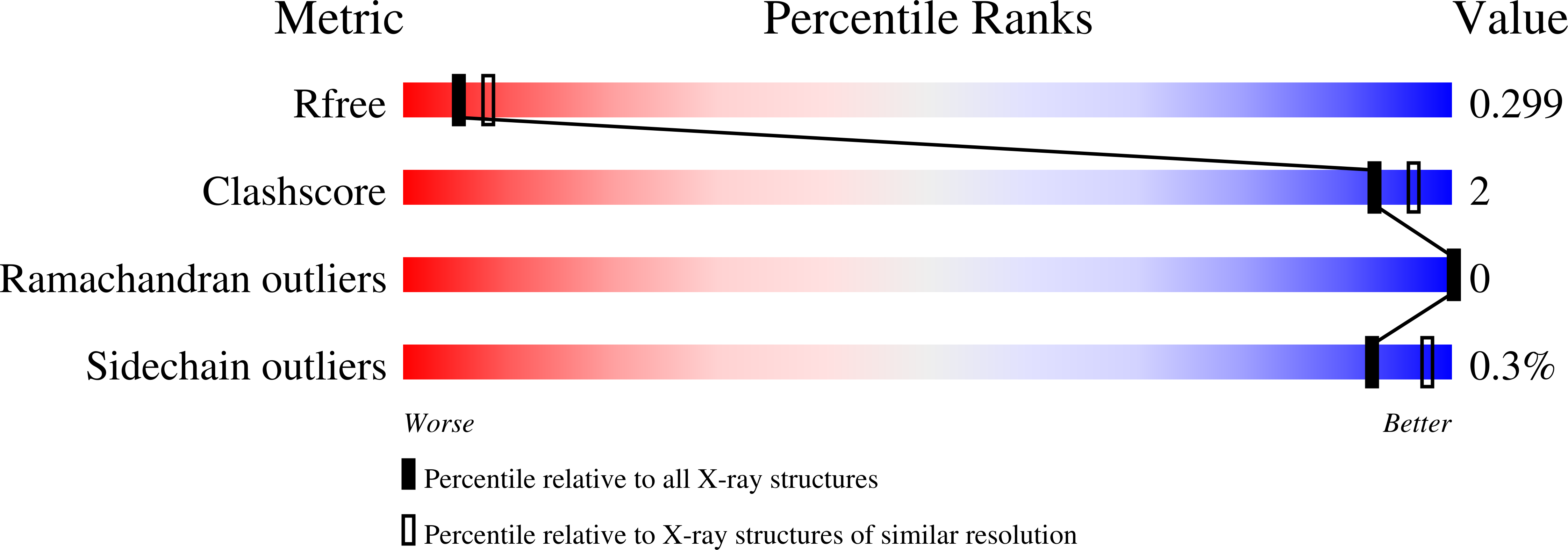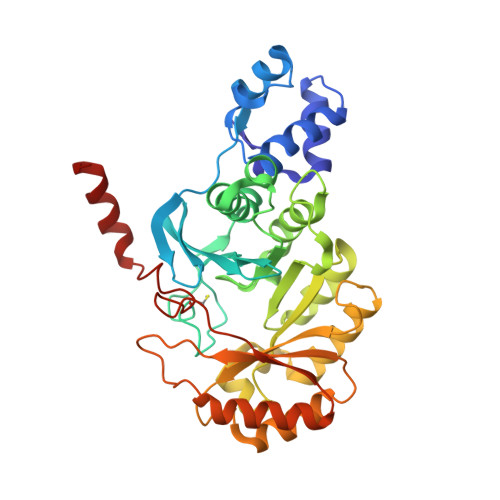Characterization of a cross-linked protein-nucleic acid substrate radical in the reaction catalyzed by RlmN.
Silakov, A., Grove, T.L., Radle, M.I., Bauerle, M.R., Green, M.T., Rosenzweig, A.C., Boal, A.K., Booker, S.J.(2014) J Am Chem Soc 136: 8221-8228
- PubMed: 24806349
- DOI: https://doi.org/10.1021/ja410560p
- Primary Citation of Related Structures:
4PL1, 4PL2 - PubMed Abstract:
RlmN and Cfr are methyltransferases/methylsynthases that belong to the radical S-adenosylmethionine superfamily of enzymes. RlmN catalyzes C2 methylation of adenosine 2503 (A2503) of 23S rRNA, while Cfr catalyzes C8 methylation of the exact same nucleotide, and will subsequently catalyze C2 methylation if the site is unmethylated. A key feature of the unusual mechanisms of catalysis proposed for these enzymes is the attack of a methylene radical, derived from a methylcysteine residue, onto the carbon center undergoing methylation to generate a paramagnetic protein-nucleic acid cross-linked species. This species has been thoroughly characterized during Cfr-dependent C8 methylation, but does not accumulate to detectible levels in RlmN-dependent C2 methylation. Herein, we show that inactive C118S/A variants of RlmN accumulate a substrate-derived paramagnetic species. Characterization of this species by electron paramagnetic resonance spectroscopy in concert with strategic isotopic labeling shows that the radical is delocalized throughout the adenine ring of A2503, although predominant spin density is on N1 and N3. Moreover, (13)C hyperfine interactions between the radical and the methylene carbon of the formerly [methyl-(13)C]Cys355 residue show that the radical species exists in a covalent cross-link between the protein and the nucleic acid substrate. X-ray structures of RlmN C118A show that, in the presence of SAM, the substitution does not alter the active site structure compared to that of the wild-type enzyme. Together, these findings have new mechanistic implications for the role(s) of C118 and its counterpart in Cfr (C105) in catalysis, and suggest involvement of the residue in resolution of the cross-linked species via a radical mediated process.
Organizational Affiliation:
Department of Chemistry, and ‡Department of Biochemistry and Molecular Biology, The Pennsylvania State University , University Park, Pennsylvania 16802, United States.

















